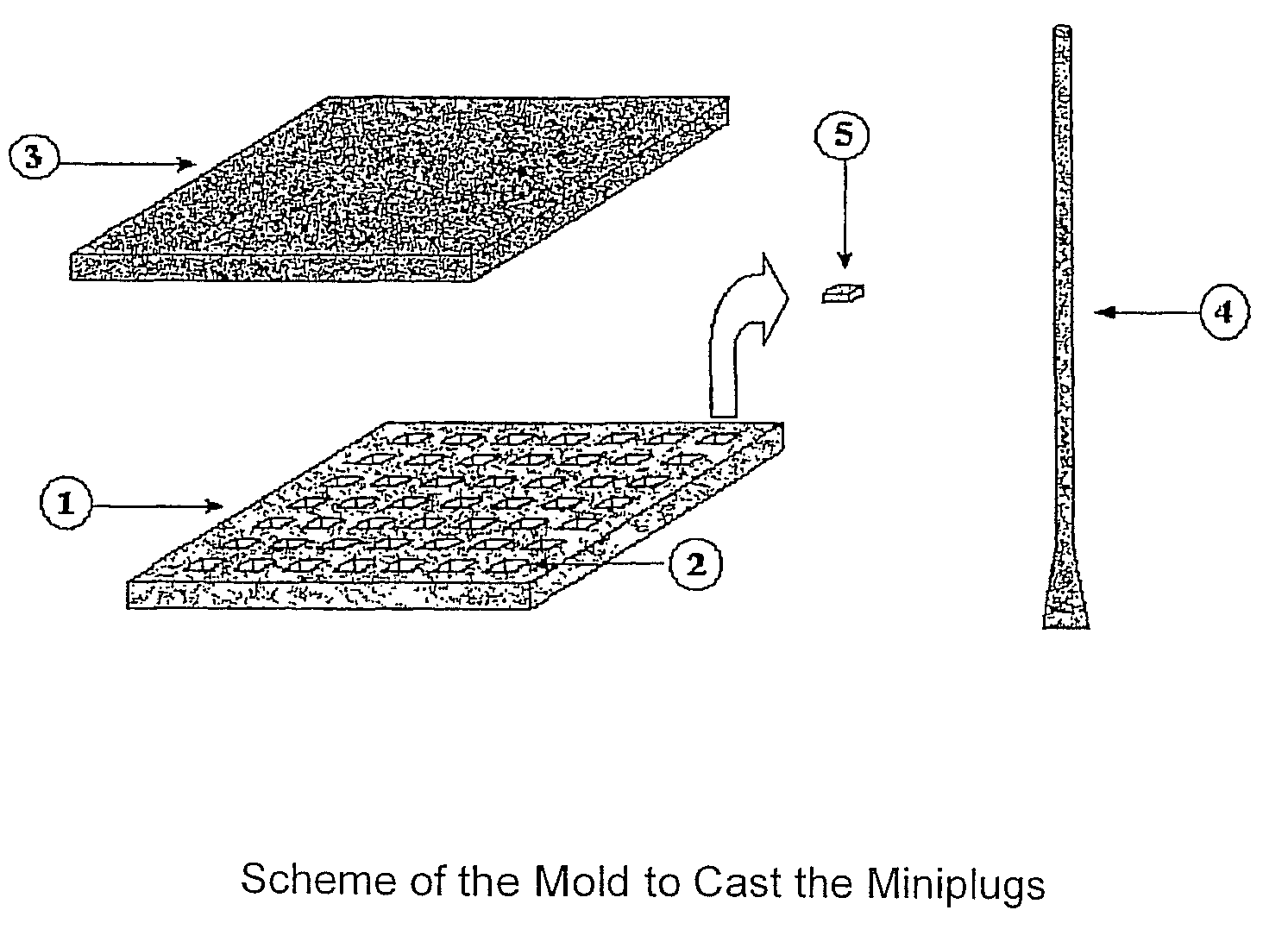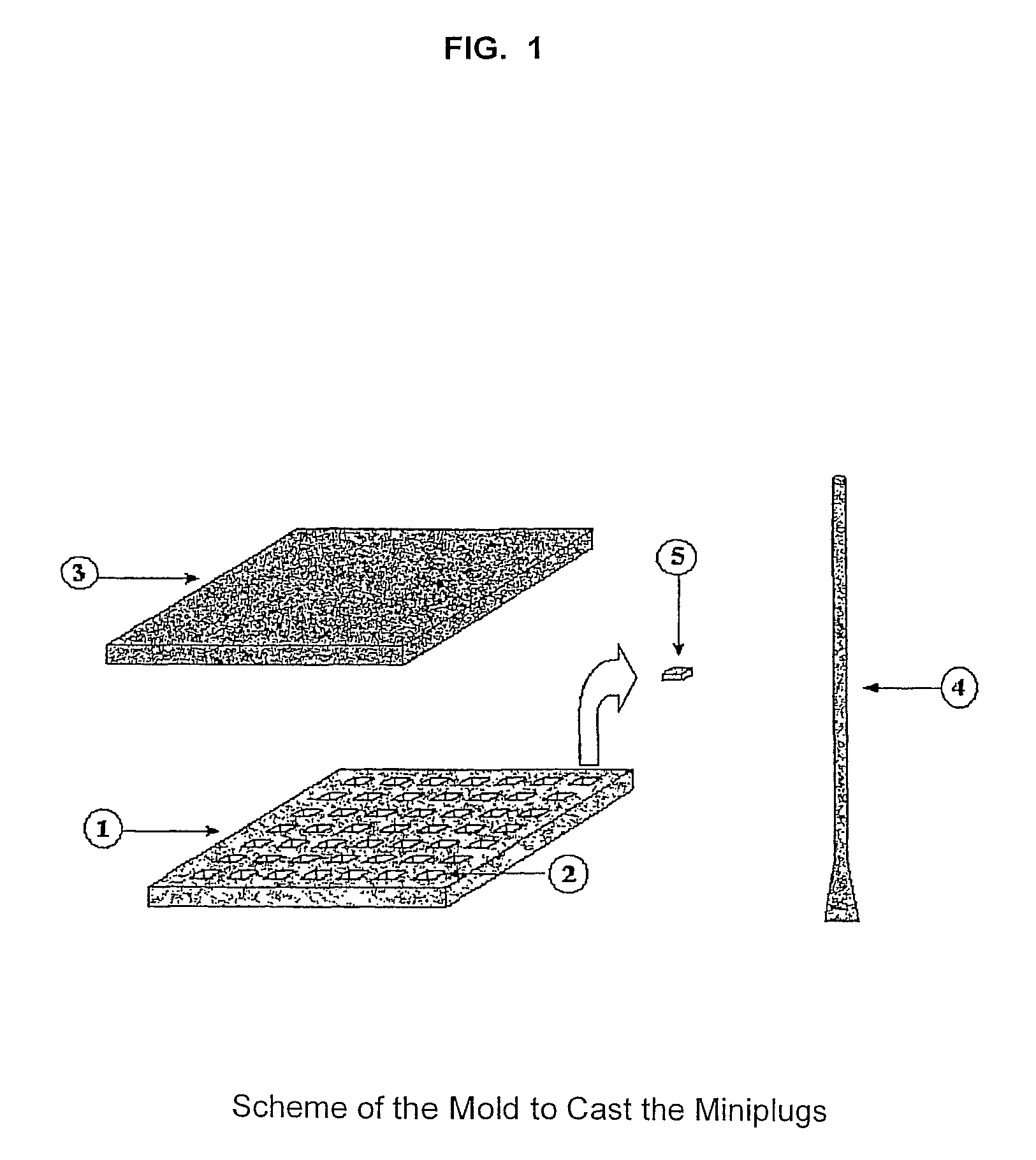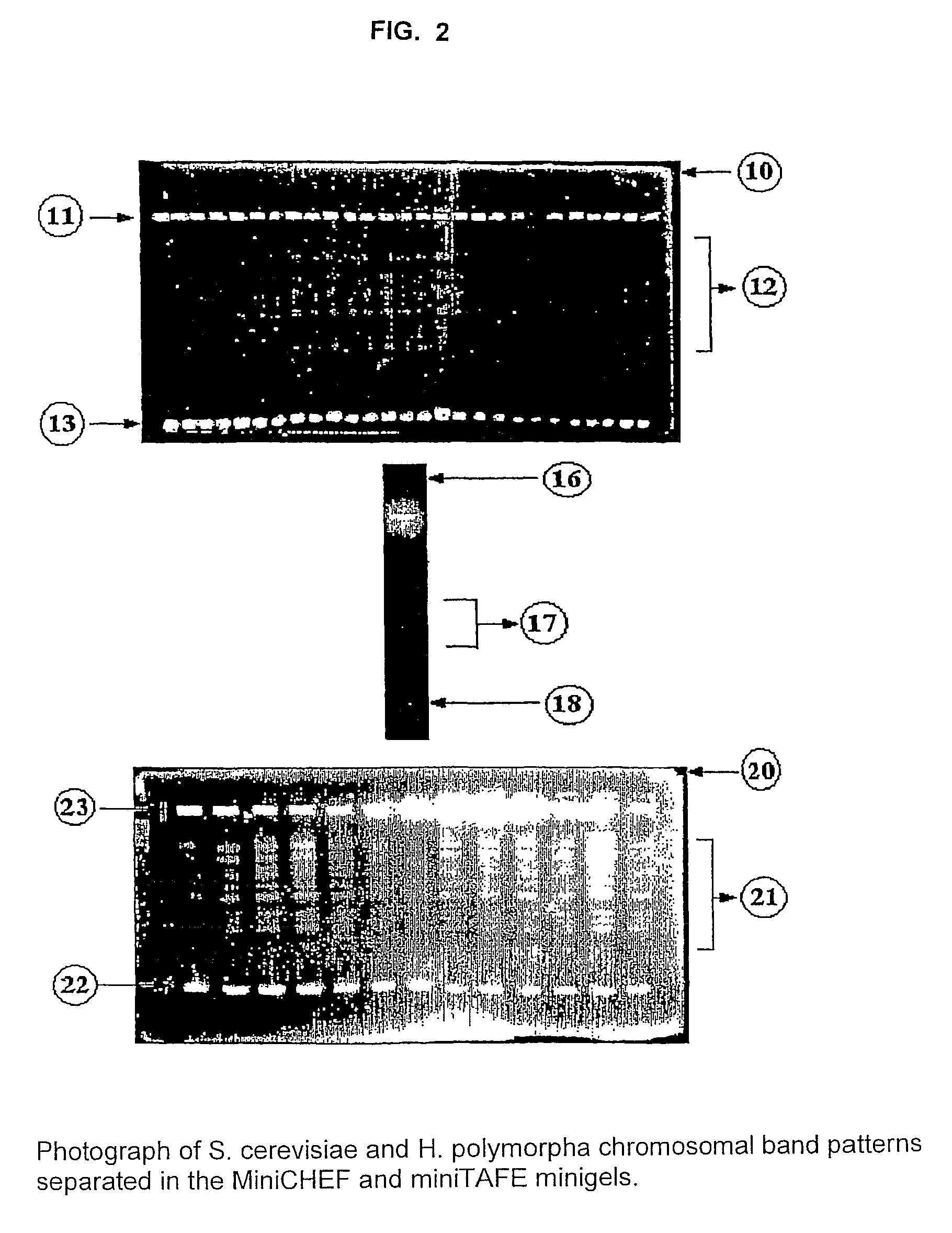Method for rapid typification of microorganisms and set of reagents used
a technology of microorganisms and reagents, applied in the direction of fluid pressure measurement, liquid/fluent solid measurement, peptides, etc., can solve the problems of large amount of buffer solution, and indirect measurement of the changes in the genetic background
- Summary
- Abstract
- Description
- Claims
- Application Information
AI Technical Summary
Benefits of technology
Problems solved by technology
Method used
Image
Examples
example 1
Mold Able to be Sterilized for the Preparation of Sample Miniplugs
[0161]An example of the mold able to be sterilized and made of a flexible material (silicone, rubber or any other material) is shown in the scheme of FIG. 1. The mold is used to prepare agarose-embedded DNA samples. The sheet (1) has 49 depressions (2). The agarose-cell suspension is poured onto the mold or sheet and distributed in the mold with the especial spatula (4). Later, the sheet (1) is cover up with the lid (3), generating the miniplugs (5) containing embedded cells. The sheet of the real mold was made with melted silicone. It was poured into another mold until the sheet (1) was formed. In the example, miniplug dimensions are 3×3×0.7 mm (length, wide×thickness). To recover the miniplugs (5) from the sheet (1), said sheet is held by its ends and bent inside a container with a solution. Consequently, the miniplugs are released from the sheet and dropped into the solution.
[0162]In other mold variants, the depres...
example 2
Non-enzymatic Preparation of Agarose-embedded Intact Yeast DNA Starting from Cells Cultured in Broth Media
[0163]Yeasts (S. cerevisiae, H. polymorpha or P. pastoris) were grown in liquid YPG medium (YPG: 10 g yeast extract, 20 g glucose and 10 g peptone dissolved in one liter of distilled water) with shaking at 30° C. until late log phase. Cells were harvested by centrifugation and washed with 0.05 M EDTA, pH 7.5 (washing solution, Table I). Agarose-embedded intact DNA is obtained performing any of the two following variants:[0164]Variant 1: Cells are incubated prior to their embedding in agarose miniplugs.[0165]Variant 2: Cells are embedded in agarose miniplugs and further the miniplugs are incubated.
[0166]In both variants the cells are embedded in agarose by preparing a cell suspension of 1.3×1010 cell / ml in 1.5% low melting agarose which was first dissolved in 0.125 M EDTA. The cell suspension is poured onto the sheets (1) of the mold shown in FIG. 1, then, the mold is covered wit...
example 3
Non-enzymatic Preparation of Agarose-embedded Intact DNA from Pseudomonas Aeruginosa Grew in Broth and on Solid Media
[0173]Two colonies of P. aeruginosa were isolated from a blood-agar plate. One of them was inoculated in 5 ml of LB medium (10 g yeast extract, 5 g sodium chloride and 10 g bacto-triptone per liter of distilled water) and the other was streaked on a LB plate (LB plus 1.2% bacteriologic agar).
[0174]Both cultures were incubated overnight at 37° C. Broth culture was incubated with shaking and the plates were kept static. Cells, grown in broth, were collected by centrifugation, whereas the plates were washed with the proper washing solution (shown in Table I) and further collected by centrifugation.
[0175]Cells grew in broth or solid media were washed with the solution shown in Table I, collected by centrifugation and re-suspended at a concentration of 2×109 cells per milliliter of 1.5% low melting agarose dissolved in 0.15 M NaCl. Agarose-cells mix was poured onto the she...
PUM
| Property | Measurement | Unit |
|---|---|---|
| pH | aaaaa | aaaaa |
| size | aaaaa | aaaaa |
| size | aaaaa | aaaaa |
Abstract
Description
Claims
Application Information
 Login to View More
Login to View More - R&D
- Intellectual Property
- Life Sciences
- Materials
- Tech Scout
- Unparalleled Data Quality
- Higher Quality Content
- 60% Fewer Hallucinations
Browse by: Latest US Patents, China's latest patents, Technical Efficacy Thesaurus, Application Domain, Technology Topic, Popular Technical Reports.
© 2025 PatSnap. All rights reserved.Legal|Privacy policy|Modern Slavery Act Transparency Statement|Sitemap|About US| Contact US: help@patsnap.com



